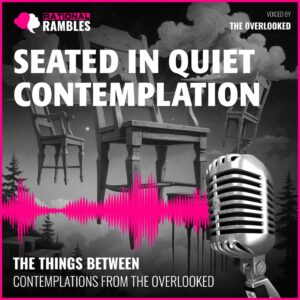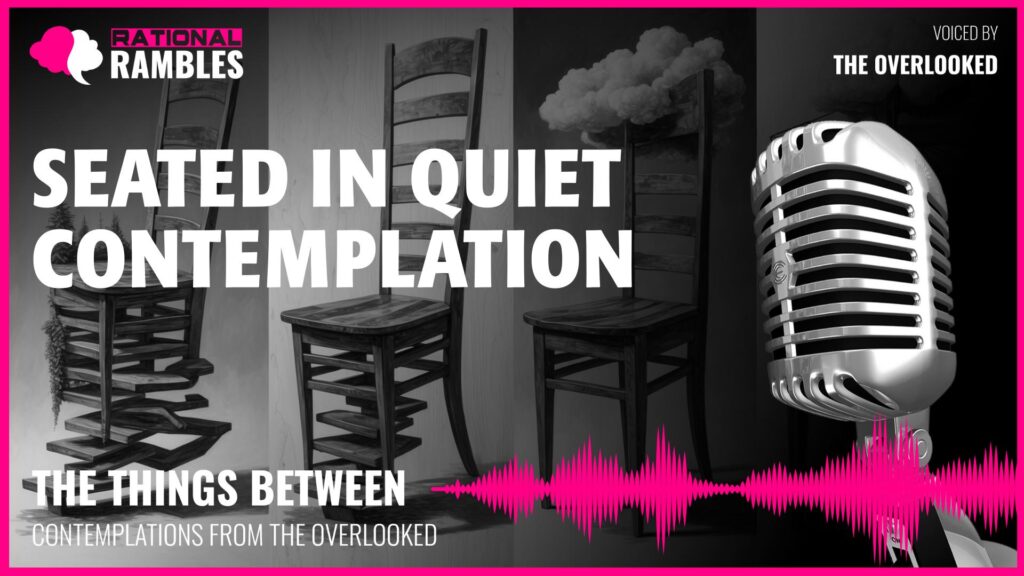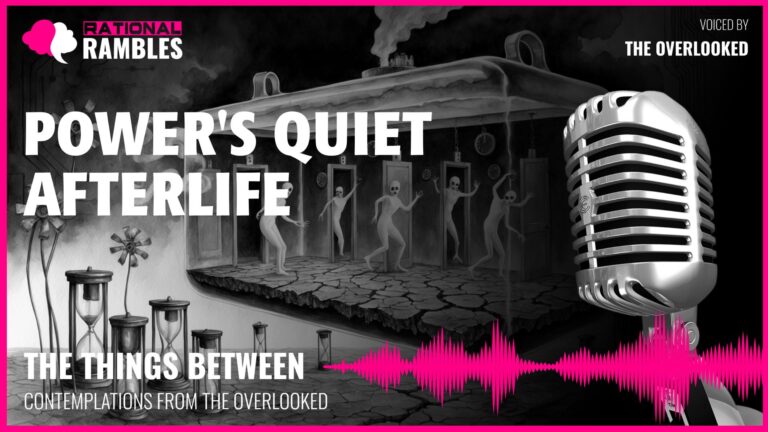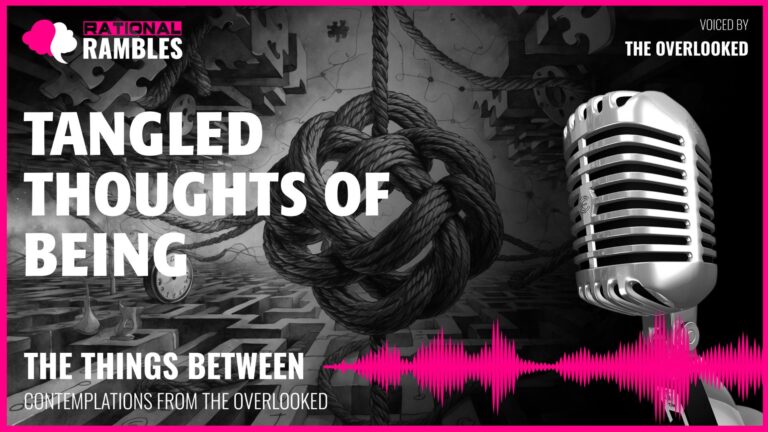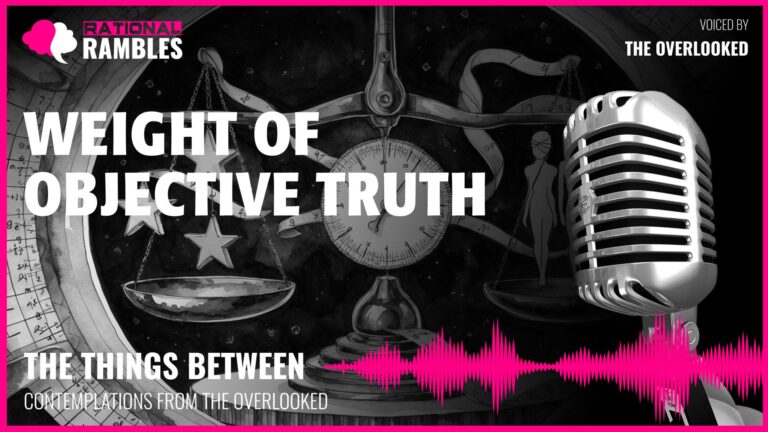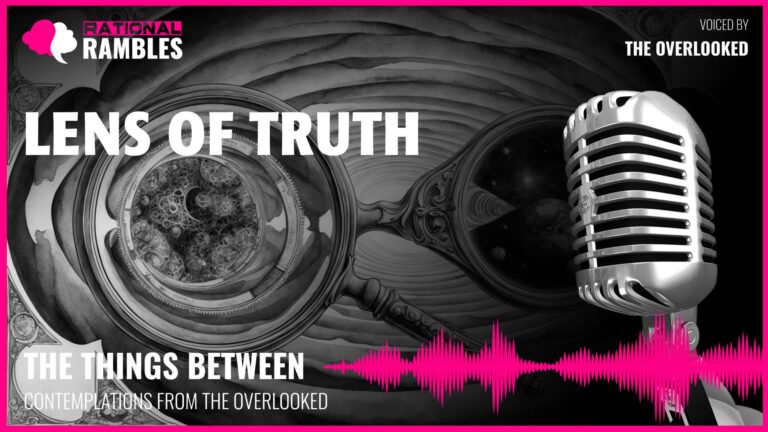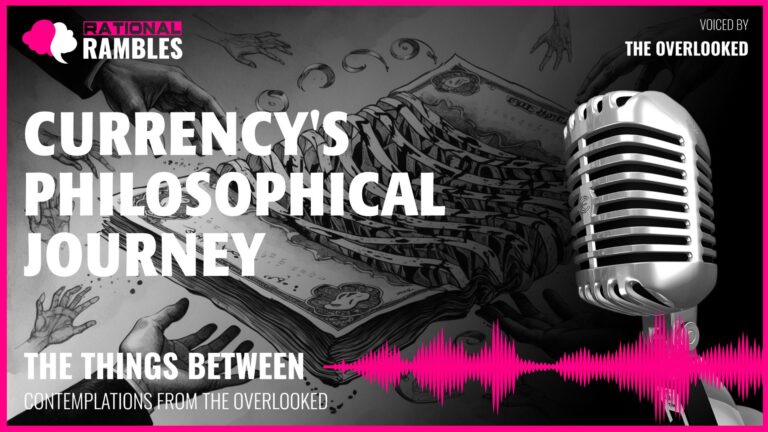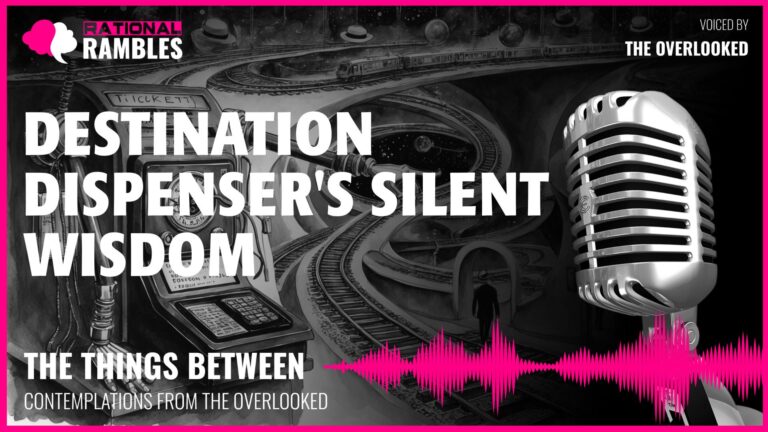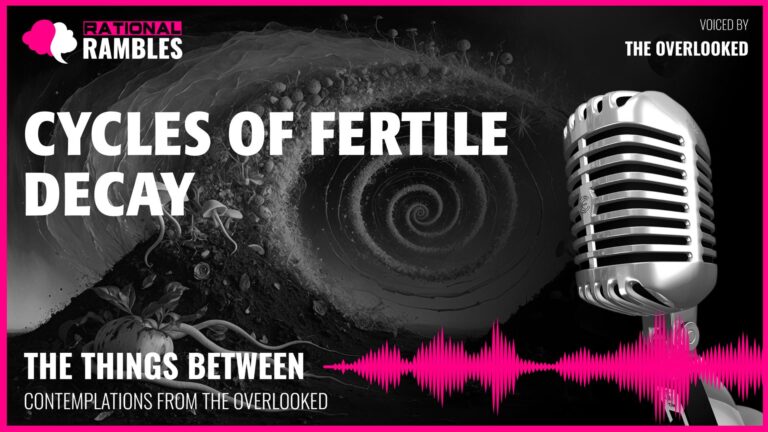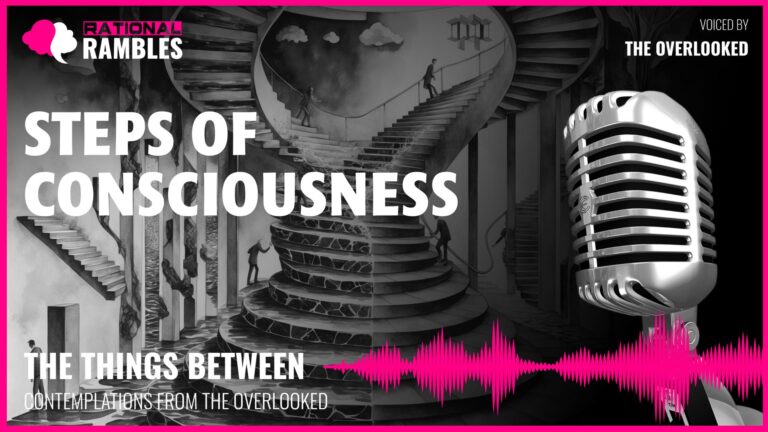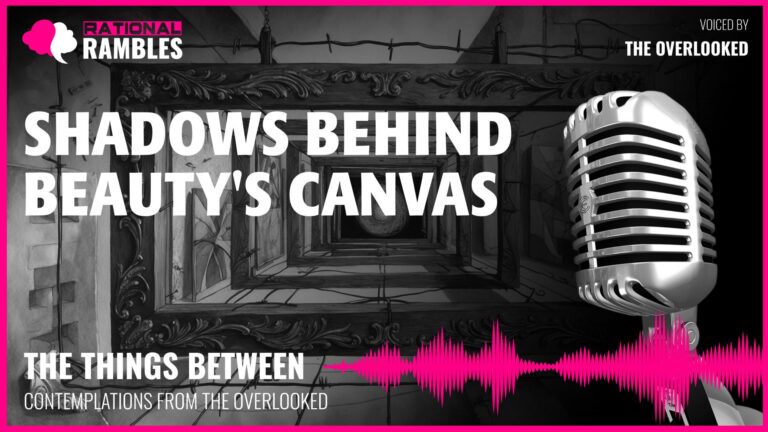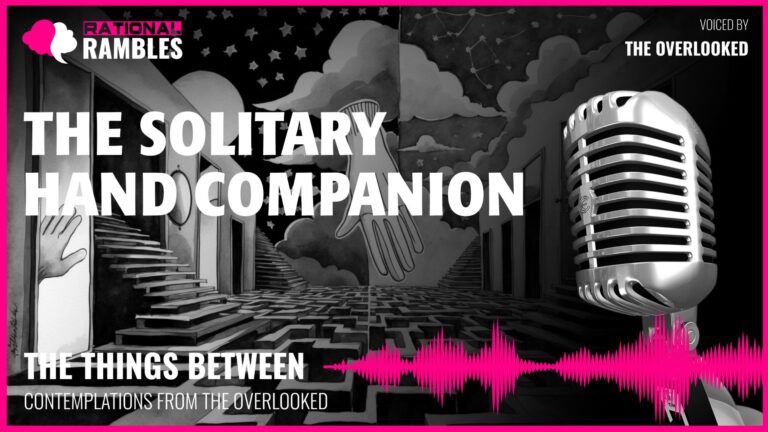The Position of Rest: An Exploration of Support, Purpose, and Presence
Introduction
In the ceaseless flow of human existence, we seldom pause to consider one of life’s most fundamental yet overlooked aspects: the nature and significance of rest. Rest exists in the interstitial spaces of our lives—between movements, between actions, between thoughts. It is both a physical necessity and a philosophical concept rich with implications about purpose, support, and presence. This exploration delves into the profound dimensions of rest, examining its place in human experience and the deeper truths it might reveal about our existence.
What is the essence of support in human experience? What can we learn from examining the relationship between stillness and motion, between serving and being served? How does our physical positioning in the world reflect or influence our psychological and spiritual orientations? These questions invite us to reconsider something we often take for granted—the very act of pausing, of being supported, of occupying a fixed position in an ever-changing world.
As we navigate these questions, we find ourselves confronting fundamental philosophical concepts: the nature of purpose, the dignity of service, the meaning of existence both in activity and repose, and the delicate balance between being noticed and being overlooked. Through this contemplation, we may discover that some of life’s most profound insights emerge not from grand movements but from those quiet moments of stillness when we finally allow ourselves to rest.
The Phenomenology of Support
Support is a fundamental aspect of existence that transcends mere physical reality. When we examine the act of supporting and being supported, we encounter a rich phenomenological landscape that reveals much about human experience and the nature of being.
The Reciprocal Nature of Support
Support, at its core, represents a unique form of relationship—one characterized by reciprocity rather than one-sided dependency. The supporter gains purpose through the act of supporting, while the supported receives stability and foundation. This reciprocal dynamic challenges conventional understanding of dependency relationships. Far from representing a hierarchical arrangement where one party simply gives and another takes, true support represents a mutual exchange of meaning.
Consider how this reciprocity manifests in human relationships. The parent supporting a child receives fulfillment and purpose from this act; the teacher supporting a student’s learning journey finds meaning in their role. The relationship isn’t merely functional but existentially significant for both parties. The supporter isn’t diminished by giving support but rather completed through the fulfillment of their purpose.
This insight compels us to reconsider relationships we might previously have viewed as one-sided. The caregiver and care-recipient, the emotional supporter and the supported—in each case, both parties complete each other through their interaction. As Martin Buber might suggest, this represents an “I-Thou” relationship rather than an “I-It” transaction.
The Invisible Essential
Support often exists in a paradoxical state of being simultaneously essential and invisible. That which provides the most fundamental stability is frequently the least acknowledged. This curious phenomenon of the “invisible essential” appears throughout human experience—from the physical infrastructure that enables modern life to the emotional foundations that sustain psychological well-being.
The philosophers of technology, from Lewis Mumford to Bruno Latour, have noted how the most successful technologies become invisible through their very ubiquity and reliability. We notice them only in their absence or failure. Similarly, in social structures, the most fundamental supporting elements—trust, shared assumptions, basic civility—become visible only when they break down.
This invisibility raises profound questions about recognition and value. Does the worth of support diminish because it goes unrecognized? Or is there perhaps a special dignity in becoming so reliable, so fundamentally integrated into the fabric of existence, that one’s presence is assumed rather than remarked upon? Ancient Taoist philosophy suggests that the highest good is like water—essential to life yet taking no particular credit for its role.
The Moment of Trust
There exists a moment of profound philosophical significance in any act of receiving support—the instant of surrender when one entrusts one’s weight, literally or figuratively, to something outside oneself. This moment represents a fundamental act of faith in the world. It acknowledges vulnerability and accepts interdependence rather than maintaining the illusion of complete self-sufficiency.
Philosophers from Kierkegaard to Levinas have explored the profound dimensions of trust as an existential state. To trust is to suspend calculation, to move beyond the cognitive realm of assessment into a different mode of being—one characterized by openness and receptivity rather than control and self-protection.
The physical act of resting weight upon a supporting structure thus becomes a manifestation of a deeper philosophical truth: that human existence is fundamentally characterized by interdependence and trust. We cannot stand alone. Our autonomy is always circumscribed by our need for support—physical, emotional, social, and existential.
The Paradox of Stillness in Motion
One of the most intriguing aspects of human experience is the relationship between movement and stillness, between perpetual activity and moments of repose. This relationship reveals profound truths about how we exist in the world and how we create meaning through both action and inaction.
The Resistance to Rest
Humans exhibit a curious ambivalence toward rest—simultaneously craving and resisting it. We long for repose yet resist surrendering to it, often experiencing a restlessness even in stillness. This paradoxical relationship with rest reveals something fundamental about human nature and our orientation toward being and doing.
The modern philosopher Byung-Chul Han, in his analysis of what he calls “the burnout society,” suggests that our difficulty with rest stems from a profound shift in how we conceptualize human value. In contemporary society, he argues, worth has become increasingly tied to productivity, creating what he terms “the achievement society” where individuals become “achievement-subjects” defined by their capacity for action and production rather than their capacity for contemplation or simple being.
This valuation of activity over stillness has deep historical roots. Pascal famously observed that “all of humanity’s problems stem from man’s inability to sit quietly in a room alone.” The existentialist tradition, particularly through thinkers like Heidegger, suggests that our discomfort with stillness may reflect an avoidance of confronting fundamental questions of being that emerge most clearly in moments of quiet contemplation.
Yet this resistance creates a profound tension, as physiological and psychological research continues to demonstrate the essential role of rest in human flourishing. The inability to surrender to rest—to temporarily relinquish control and activity—may reflect a deeper anxiety about identity and worth in a culture that increasingly conflates doing with being.
Rest as Active Presence
Contrary to common perception, rest is not merely the absence of activity but rather a distinctive mode of being with its own qualities and characteristics. This insight challenges the binary opposition often assumed between action and rest, suggesting instead that rest represents a form of active presence in the world.
Eastern philosophical traditions have long recognized this quality of active presence within stillness. The concept of wu wei in Taoism—often translated as “non-action” or “effortless action”—describes not the absence of action but rather a particular quality of engagement characterized by alignment with the natural flow of existence. Similarly, meditative traditions across cultures understand stillness not as emptiness but as a heightened form of presence and awareness.
Phenomenologists like Merleau-Ponty have explored how the lived body maintains an active engagement with the world even in states of apparent repose. The body at rest is not disconnected from its environment but rather maintains what he calls a “posture toward the world”—a readiness and orientation that precedes specific actions.
This reconceptualization of rest as a form of active presence rather than passive absence has significant implications for how we understand human flourishing. It suggests that periods of apparent inactivity may be essential not merely for recovery but for a particular kind of engagement with existence that is inaccessible during periods of directed activity.
The Space Between
Rest can be understood not merely as a state but as a transition, a pause between activities that provides crucial space for integration, reflection, and preparation. This “space between” holds unique value that cannot be reduced to either the activities it separates or its utility in preparing for future action.
The philosopher Hans-Georg Gadamer, in his explorations of hermeneutics and understanding, emphasized the importance of what he called “the in-between”—the space where meaning emerges not from either of two established positions but from the tension and relation between them. Similarly, rest might be conceptualized as an interpretive space where experiences are integrated and meaning is constructed.
Composers and musicians have long recognized the essential role of silence in music—not as empty space but as an active component that gives shape and meaning to sounds. John Cage’s famous composition 4’33”, consisting entirely of silence, challenges listeners to recognize the rich acoustic environment that emerges when deliberate sound-making ceases. Similarly, the pauses between human activities create space for a different kind of awareness to emerge.
This perspective invites us to reconsider how we value and structure the intervals between activities in our lives. Rather than treating these as merely empty transitions or opportunities for recovery, we might recognize them as spaces with their own intrinsic value—moments where a different kind of meaning-making becomes possible.
The Ontology of Purpose
What does it mean to have a purpose? How does purpose relate to existence, identity, and fulfillment? These questions lead us into an ontological inquiry that touches on the very nature of being and meaning.
Purpose as Essence
There exists a profound philosophical question about whether purpose is intrinsic to existence or imposed upon it. Does purpose define essence, or does essence exist independently of purpose? This inquiry touches on fundamental questions of teleology and ontology that have occupied philosophers for millennia.
The Aristotelian tradition proposes that each entity has a telos—an end or purpose toward which it naturally develops. In this view, purpose is not external to existence but intrinsic to it, defining the very nature of a thing. This perspective suggests that to understand what something is requires understanding what it is for—its function within a larger order.
In contrast, existentialist philosophers like Sartre famously argued that “existence precedes essence”—that human beings first exist and then define themselves through their choices and actions rather than being defined by a pre-existing purpose or nature. This perspective rejects inherent teleology in favor of self-determination and freedom.
Between these positions lie various nuanced approaches. Heidegger’s concept of “readiness-to-hand” (Zuhandenheit) suggests that purpose emerges in the context of practical engagement with the world rather than existing either as an intrinsic property or a purely subjective imposition. Purpose, in this view, emerges from the relationship between beings and their environment.
The Dignity of Function
There is a particular kind of dignity that comes from fulfilling one’s purpose well—from excelling in one’s function. This “dignity of function” represents a form of excellence that transcends mere utility and touches on deeper questions of harmony, appropriateness, and alignment.
The ancient Greeks captured this concept in their notion of arete—excellence or virtue understood as the fulfillment of purpose. For Aristotle, the good life consisted in fulfilling one’s function well, in accordance with virtue. This applied not only to human beings but to all things—each has its own appropriate excellence based on its nature and purpose.
This perspective challenges contemporary tendencies to separate dignity from function, suggesting instead that there is profound worth in the alignment between being and purpose. The Japanese concept of ikigai—the intersection of what one loves, what one is good at, what the world needs, and what one can be rewarded for—reflects this holistic understanding of purpose as integral to a life well-lived.
Yet this view also raises questions about imposed purposes versus intrinsic ones. Is there dignity in fulfilling a purpose assigned by others, or does true dignity require self-determination? The philosophical tradition of critical theory, from Marx through the Frankfurt School, has emphasized the importance of distinguishing authentic purposes from alienated ones imposed by economic and social structures.
Readiness as Fulfillment
There exists a state of being that might be called “active readiness”—a condition of preparedness and openness that constitutes its own form of fulfillment rather than merely anticipating future action. This state challenges conventional understandings of purpose as always directed toward external outcomes.
Martin Heidegger’s concept of Gelassenheit—often translated as “releasement” or “letting-be”—describes an attitude of openness and receptivity that allows things to reveal themselves on their own terms rather than being approached instrumentally. This state of readiness without imposition represents a different mode of engagement with purpose—one characterized by receptivity rather than projected intention.
Similarly, certain Eastern philosophical traditions emphasize the concept of “beginner’s mind”—a state of openness and readiness that precedes specific action or knowledge. This state is valued not merely as preparation for something else but as a way of being that has its own integrity and worth.
This perspective invites a reconsideration of how we understand fulfillment. Rather than locating fulfillment exclusively in the achievement of specific outcomes or the completion of defined activities, it suggests that there can be profound satisfaction in the state of prepared openness itself—in being ready to fulfill one’s purpose when called upon.
The Presence of the Overlooked
What does it mean to be present yet overlooked? This philosophical question invites us to consider the nature of perception, recognition, and existence itself.
The Paradox of Invisibility
There exists a curious ontological state of being simultaneously present and invisible—of existing in plain sight yet escaping notice. This paradoxical condition raises profound questions about the relationship between perception, acknowledgment, and existence.
The philosopher Martin Heidegger distinguished between two modes of encountering entities in the world: the “present-at-hand” (Vorhandenheit), where we explicitly notice and contemplate objects as distinct things, and the “ready-to-hand” (Zuhandenheit), where tools and objects fade from explicit awareness as we engage with them in practical activity. This distinction suggests that invisibility may sometimes be a function of perfect integration rather than absence.
Feminist philosophers have extended this analysis to social visibility, with scholars like Susan Bordo and Iris Marion Young examining how certain forms of labor and care work become invisible precisely because they maintain the structures that others take for granted. Similarly, phenomenologists of race like Frantz Fanon and George Yancy have explored how racialized bodies can be simultaneously hypervisible and invisible in different contexts.
This paradox challenges simplistic understandings of existence as binary—either present or absent. Instead, it suggests a spectrum of visibility and recognition that depends not only on physical presence but on social acknowledgment, attention, and the frameworks through which we organize our perception of the world.
The Ethics of Recognition
The act of acknowledging that which supports us—of recognizing the typically overlooked foundations of our experience—takes on ethical dimensions. This recognition represents not merely an epistemological correction but a moral reorientation toward gratitude and awareness.
Philosophers in the tradition of ethics of care, from Nel Noddings to Virginia Held, have emphasized the importance of recognizing interdependence and the often invisible work of maintaining the conditions that make human flourishing possible. This recognition challenges the myth of self-sufficiency and draws attention to the networks of support that sustain individual achievement.
Emmanuel Levinas placed the recognition of the “face of the Other” at the center of his ethical philosophy, arguing that the primordial ethical encounter comes in the moment of recognizing another being who makes claims upon us through their very existence. This recognition precedes and grounds all other ethical considerations.
Applying these insights more broadly suggests an ethical imperative to attend to the overlooked supports of our existence—both human and non-human. Such attention represents not merely intellectual acknowledgment but a fundamental reorientation of consciousness toward gratitude and care for that which sustains us.
Being Without Being Perceived
The philosophical question “If a tree falls in a forest and no one is around to hear it, does it make a sound?” points to deeper questions about existence independent of perception. Does being require being perceived, or does it have integrity apart from recognition?
Bishop Berkeley’s idealist philosophy famously proposed “esse est percipi“—to be is to be perceived—suggesting that existence itself depends on being observed. This view contrasts with various forms of realism that maintain the independence of objects from perceivers.
More nuanced positions, such as Kant’s transcendental idealism, suggest that while things-in-themselves exist independently of perception, our access to them is always mediated by the structures of human cognition. This creates a complex relationship between being and being-known that resists simple resolution.
Contemporary philosopher Jane Bennett’s work on “vibrant matter” proposes that nonhuman entities possess a kind of agency and vitality independent of human recognition, challenging anthropocentric views that make human perception the measure of existence. Similarly, object-oriented ontology rejects the privileging of human-world relations and argues for the dignity and reality of objects apart from their relationship to human perceivers.
These perspectives invite us to consider a form of ethical humility—an acknowledgment that the world exists and matters beyond our perception of it, and that things may have kinds of significance that exceed our capacity to recognize or categorize them.
The Temporality of Stillness
How does stillness relate to time? This section explores the temporal dimensions of rest and stability, examining how fixed points relate to the flow of temporal experience.
Witnessing as a Mode of Being
There exists a particular way of relating to time that might be called “witnessing”—a mode of being characterized by attentive presence rather than active intervention. This witnessing stance offers a unique perspective on temporal experience and human events.
The philosopher Hannah Arendt distinguished between different modes of human activity: labor (activities necessary for biological survival), work (creating durable objects), and action (political engagement with others). To these we might add witnessing—the attentive presence that neither produces nor intervenes but observes and remembers.
Witnessing represents a form of participation in events that differs from direct involvement. The witness holds a position that is simultaneously detached and engaged—present to what unfolds without determining its course. This position creates the possibility for a particular kind of understanding that may be inaccessible to direct participants caught up in the immediate demands of action.
Various philosophical traditions have valued this witnessing stance. Phenomenology emphasizes the importance of careful observation without premature categorization or judgment. Buddhist mindfulness practices cultivate a witnessing consciousness that observes thoughts and sensations without immediately identifying with or reacting to them.
This perspective suggests that there may be profound value in positions and roles that allow for sustained attention and presence—that the capacity to witness and remember represents not a passive default but an active contribution to human understanding and culture.
The Stability of Change
Paradoxically, stable points serve a crucial function in our experience and understanding of change. Fixed positions allow us to register and make sense of motion, providing the necessary contrast through which transformation becomes perceptible.
The pre-Socratic philosopher Heraclitus famously declared that one cannot step into the same river twice, emphasizing the constant flux of existence. Yet our ability to recognize this flux depends upon relative stabilities—the continuing identity of the river as a concept, the relative stability of our own observing consciousness, the fixed position from which observation occurs.
Modern physics reflects this interdependence of stability and change. Einstein’s theory of relativity demonstrates that the measurement of motion requires reference frames, while quantum mechanics suggests that observation itself plays a role in determining what is observed. In both cases, the position of the observer is integral to the perception and measurement of change.
This interdependence challenges simplistic oppositions between stability and change, suggesting instead that they exist in a complementary relationship. Stable positions are not the denial of change but rather the condition for its meaningful registration and interpretation.
The Duration of Presence
The philosopher Henri Bergson distinguished between time as measured by clocks (chronos) and time as directly experienced through consciousness (durée or duration). This distinction helps illuminate the unique temporality of sustained presence—a way of being that differs from both momentary engagement and mechanical persistence.
Duration in Bergson’s sense refers to the continuous flow of experiential time that resists division into discrete units. It represents a qualitative rather than quantitative temporality, characterized by the interpenetration of moments rather than their succession.
Sustained presence exemplifies this durational quality. Rather than consisting of a series of discrete moments, it constitutes a continuous availability that transcends the quantitative measurement of time. This presence is not repetition (the same moment occurring again and again) but continuation—a sustained opening toward what emerges.
Contemporary philosophers like Gilles Deleuze have built on Bergson’s insights to develop ontologies of becoming that emphasize process over fixed states. From this perspective, even apparent stability represents a dynamic process of renewal and continuation rather than static persistence.
This understanding of duration has significant implications for how we conceptualize commitment, reliability, and presence in human relationships and institutions. It suggests that sustained presence represents not the absence of change but rather a particular quality of engaged continuation that maintains identity through transformation rather than despite it.
The Aesthetics of Position
Our physical positioning in space carries profound aesthetic, social, and existential implications. This section explores how position shapes experience and understanding.
The Arrangement of Relation
The way physical objects are positioned in relation to each other creates not merely practical arrangements but meaningful constellations that shape human experience and interaction. These spatial configurations possess both aesthetic and social dimensions that influence how we relate to ourselves and others.
Phenomenologists have explored how the arrangement of objects in space creates what Edmund Husserl called “horizons of experience”—structured fields of potential perception and action that organize our engagement with the world. These arrangements are never neutral but always laden with meaning and implication.
The philosopher Gaston Bachelard, in his Poetics of Space, examined how spatial arrangements create psychological and poetic resonances that shape human experience. The position of objects in relation to each other establishes not merely physical proximity but meaningful constellations that influence mood, memory, and possibility.
Social theorists from Erving Goffman to Edward T. Hall have analyzed how the arrangement of bodies in space creates and reinforces social relationships, establishing patterns of interaction that communicate status, intimacy, and cultural expectations. These spatial configurations both reflect and constitute social realities.
This perspective invites attention to the communicative and constitutive power of spatial arrangements—how the positioning of objects and bodies in relation to each other creates not merely functional configurations but meaningful worlds.
The Dignity of Form
There exists an aesthetic and ethical dimension to the relationship between form and function—a harmony that emerges when structure perfectly serves purpose without excess or deficiency. This “rightness” of design represents a kind of integrity that transcends mere utility.
The ancient Greek concept of to kalon—often translated as “the beautiful” but encompassing notions of nobility, appropriateness, and admirability—captures this integration of aesthetic and functional excellence. Beauty in this sense emerges not from ornament but from the perfect alignment of form with purpose.
Japanese aesthetic traditions express similar values through concepts like shibui (subtle elegance), seijaku (tranquility), and kanso (simplicity). These traditions prize design that achieves its purpose through balanced simplicity rather than elaboration, embodying what designer Dieter Rams later formulated as the principle that “good design is as little design as possible.”
The philosophical tradition of phenomenology, particularly through thinkers like Maurice Merleau-Ponty, has explored how the body’s form is perfectly suited to its mode of being-in-the-world. The structure of the human body is not arbitrary but reflects its way of engaging with the environment, creating what Merleau-Ponty calls the “body schema” that organizes our practical engagement with the world.
This perspective suggests that there is a particular kind of beauty and dignity in designs—whether natural or human-made—that achieve their purpose through economy of form, where nothing is superfluous and nothing essential is lacking.
The Poetry of Posture
Physical posture carries not merely biomechanical implications but existential significance. How we position ourselves physically both expresses and influences our orientation toward existence, others, and ourselves.
Philosophers from Nietzsche to Foucault have explored how bodily postures and disciplines both reflect and reinforce power relationships and existential orientations. Nietzsche’s description of different physical stances—from the camel’s burden-bearing to the lion’s resistance to the child’s creative play—uses posture as a metaphor for different relationships to existence.
Phenomenologists like Merleau-Ponty have analyzed how the lived body’s positioning creates the foundation for all other forms of orientation in the world. Our physical stance establishes the “zero point” from which we engage with our surroundings, influencing perception, attention, and possibility.
Contemporary somatic practitioners and researchers, building on insights from traditions like the Alexander Technique and the work of Moshe Feldenkrais, have demonstrated the profound interconnections between physical positioning and psychological states. These approaches reveal how posture represents not merely a physical configuration but an existential orientation that influences thought, emotion, and relationship.
This perspective invites attention to the poetry of posture—how physical positioning can express and cultivate particular qualities of presence, receptivity, and engagement. It suggests that seemingly simple physical adjustments may carry profound implications for how we experience ourselves and our relationship to the world.
The Service of Existence
What does it mean to serve? This section explores the philosophical dimensions of service, support, and the relationship between utility and intrinsic worth.
The Honor in Unacknowledged Support
There exists a particular kind of honor in providing support that goes unrecognized—in being the unacknowledged foundation upon which others build. This quiet contribution represents a form of service that challenges conventional understandings of recognition and value.
Various philosophical and religious traditions have valued forms of service that do not seek recognition. The Daoist concept of wu wei (non-action or effortless action) prizes contributions that are so well-integrated with the natural flow of events that they become nearly imperceptible. Similarly, certain strands of Christian thought emphasize the virtue of humility, valuing service performed without expectation of acknowledgment or praise.
Feminist philosophers have analyzed how certain forms of care work and maintenance labor—historically performed disproportionately by women—tend to become visible only in their absence. This “background” work creates the conditions that make more visible forms of achievement possible, yet often receives little recognition or compensation.
This perspective challenges hierarchies of value that privilege visible achievement over underlying support. It suggests that there may be a particular kind of dignity in providing the foundation upon which others build—in being the essential but often overlooked condition for others’ flourishing.
The Paradox of Utility
The relationship between utility and intrinsic value presents a philosophical paradox. Does something’s worth derive from its usefulness to others, or does usefulness itself depend on a prior recognition of intrinsic worth? This chicken-and-egg problem reveals the complex relationship between instrumental and inherent value.
Kant’s categorical imperative insisted that persons should be treated as ends in themselves, never merely as means—establishing a fundamental distinction between things that can be used and beings that possess inherent dignity. Yet this distinction becomes complicated when we consider how serving others can itself be a source of meaning and dignity.
Utilitarian philosophers like Mill and Bentham grounded ethics in utility—the capacity to produce happiness or reduce suffering. This approach identifies value with consequences rather than intrinsic properties. Yet even utilitarianism must ultimately appeal to something taken as intrinsically valuable (happiness, well-being, preference satisfaction) rather than merely instrumentally useful.
Contemporary philosopher Martha Nussbaum’s capabilities approach attempts to navigate this tension by identifying fundamental capacities whose development and exercise constitute human flourishing. This approach recognizes both the intrinsic value of human capabilities and their instrumental role in enabling good lives.
These perspectives suggest that the relationship between utility and intrinsic value may be complementary rather than oppositional. Perhaps the highest form of respect for something’s intrinsic worth involves recognizing and enabling its capacity to serve its proper function—to fulfill the purpose for which it is uniquely suited.
The Generosity of Being
At the heart of existence lies a fundamental generosity—a giving of oneself that precedes calculation of return. This primordial generosity represents not an addition to being but an essential characteristic of existence itself.
Phenomenologist Jean-Luc Marion has explored what he calls “the gift” as a fundamental category that precedes economic exchange. Unlike exchange, which operates on principles of equivalence and return, the gift in its purest form represents a giving without expectation—a generosity that creates possibilities rather than settling accounts.
Ecologically oriented philosophers like David Abram and Freya Mathews have described how natural systems embody forms of giving that precede human economic frameworks. The tree that produces oxygen, fruit, and shade does not calculate return on investment but manifests a kind of generosity intrinsic to its mode of being.
Theologian John D. Caputo has explored what he calls “the weakness of God”—a divine power that operates not through domination but through vulnerable giving and invitation. This perspective suggests that true strength may lie not in impervious self-sufficiency but in the capacity for generous offering.
These approaches converge on an understanding of being itself as fundamentally characterized by giving rather than taking, by offering rather than claiming. They suggest that the most basic characteristic of existence may be not self-preservation but self-giving—a generosity that creates the conditions for relationship and community.
Philosophical Implications of Position
Our physical positioning in the world provides a rich metaphorical framework for understanding deeper philosophical concepts about identity, perspective, and relation.
Fixed Points in a Flowing World
In a world characterized by constant change and flux, fixed positions serve crucial functions for orientation, reference, and meaning-making. These stable points create the conditions for understanding movement and transformation rather than opposing them.
The pre-Socratic philosopher Parmenides argued for the fundamental unchangeability of being, while his contemporary Heraclitus emphasized perpetual flux. This ancient debate continues in various forms throughout philosophical history, raising questions about how stability and change relate to each other.
Mathematician Kurt Gödel’s incompleteness theorems demonstrated that any consistent formal system must contain truths that cannot be proven within the system itself. This mathematical insight suggests a broader principle: that orientation within any domain requires reference points that cannot be fully accounted for from within that domain.
Contemporary philosopher Catherine Malabou has developed the concept of “plasticity” to describe a capacity for transformation that nevertheless maintains identity through change. This plastic quality differs from both rigid fixity and formless flexibility, suggesting a dynamic stability that evolves without dissolution.
These perspectives converge on an understanding of fixed points not as denials of change but as conditions for its meaningful registration and interpretation. They suggest that orientation in a flowing world requires not absolute immobility but rather forms of relative stability that provide context for understanding transformation.
The Ethics of Position
Where one stands—literally and metaphorically—carries ethical implications. Position creates particular forms of responsibility, shapes perception, and establishes relationships that define ethical possibilities and obligations.
Feminist standpoint theorists like Sandra Harding and Patricia Hill Collins have argued that social position shapes knowledge in ways that are epistemologically significant. Different standpoints provide access to different aspects of reality, suggesting that comprehensive understanding requires engaging with multiple positioned perspectives rather than seeking a supposedly neutral “view from nowhere.”
Emmanuel Levinas located the origin of ethics in the face-to-face encounter with the Other—a positioning that creates immediate responsibility prior to any conceptual understanding or deliberate choice. This perspective suggests that ethical responsibility emerges from relation rather than abstract principle.
Environmental philosophers have explored how our position within natural systems shapes our ethical responsibilities toward non-human beings. Aldo Leopold’s “land ethic” emerges from the recognition that humans are “plain members and citizens” of the biotic community rather than its governors or owners.
These approaches converge on an understanding of ethics as fundamentally situated and relational rather than abstract and universal. They suggest that moral discernment requires attention to position—to where one stands in relation to others and how this positioning shapes both perception and responsibility.
The Metaphysics of Perspective
Our physical positioning in space serves as both literal reality and powerful metaphor for how consciousness engages with the world. The relationship between position and perspective illuminates fundamental questions about objectivity, subjectivity, and the nature of knowledge.
The philosophical tradition of perspectivism, associated particularly with Nietzsche, rejects the possibility of a “God’s eye view” in favor of recognition that all knowledge is situated and perspectival. This approach doesn’t deny truth but reconceives it as necessarily partial and positioned rather than total and detached.
Phenomenology, through thinkers like Husserl and Merleau-Ponty, has explored how embodied positioning creates the conditions for perception and understanding. Our physical situation in space—our orientation, movement capabilities, and sensory apparatus—fundamentally shapes how the world appears to us and what aspects become salient.
Contemporary cognitive science has developed the concept of “embodied cognition”—the recognition that thinking emerges from bodily engagement with environments rather than abstract computation. This research program demonstrates how physical positioning and movement capabilities fundamentally shape conceptual understanding.
These approaches converge on an understanding of perspective not as a limitation to be overcome but as the necessary condition for any engagement with the world. They suggest that knowledge emerges not from transcending position but from acknowledging and working with the possibilities and limitations of particular standpoints.
Conclusion: The Dignity of Position
Our exploration has traveled through various dimensions of rest, support, and positioning, revealing these not as mere physical circumstances but as philosophically rich territories that illuminate fundamental aspects of human experience. From the phenomenology of support to the paradoxes of stillness, from the ontology of purpose to the ethics of recognition, we have found that position—both literal and metaphorical—shapes our being-in-the-world in profound ways.
Several key insights emerge from this investigation. First, support and rest represent not the absence of action but distinctive modes of being with their own qualities and significance. The capacity to provide steady support, to serve as a reliable foundation, constitutes not a lesser form of existence but one with its own dignity and worth.
Second, we have seen how purpose intertwines with identity in complex ways. The alignment between what something is and what it does creates a particular kind of integrity that transcends both rigid essentialism and formless flexibility. This suggests that finding one’s proper position—physically, socially, existentially—represents not constraint but the fulfillment of possibility.
Third, our exploration reveals the profound interdependence that characterizes existence. No position exists in isolation; each finds its meaning and function in relation to others. This relational quality applies not only to physical positioning but to existential stance—to how we orient ourselves toward being itself.
Finally, we have discovered how position creates perspective—how where we stand shapes what we see and how we understand. This recognition invites both epistemological humility and ethical attentiveness to the positioned nature of all knowledge and experience.
These insights invite us to reconsider aspects of existence often overlooked or undervalued. They suggest that there is dignity in stillness, honor in support, and wisdom in acknowledging the positioned nature of our being. Perhaps most fundamentally, they remind us that meaning emerges not from transcending the physical conditions of existence but from embracing and exploring them as the ground from which all understanding grows.
As we return to our daily lives—to the countless moments of sitting and standing, supporting and being supported, moving and resting—we might carry with us a deepened appreciation for these ordinary positions. For in them we find not merely physical circumstances but windows into the nature of being itself—opportunities to encounter, in the most common experiences, the profound mysteries of existence.


